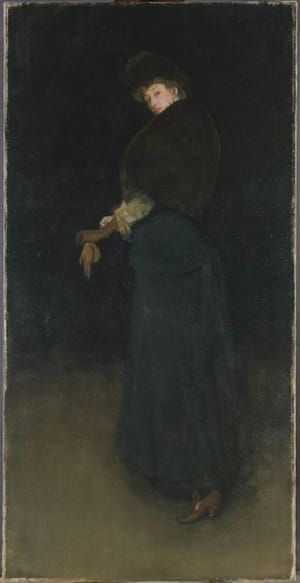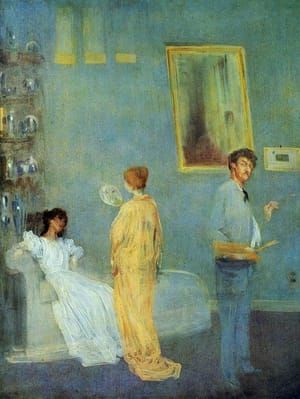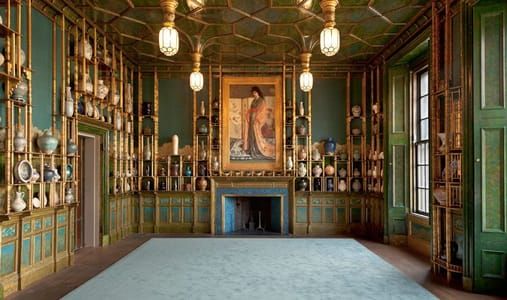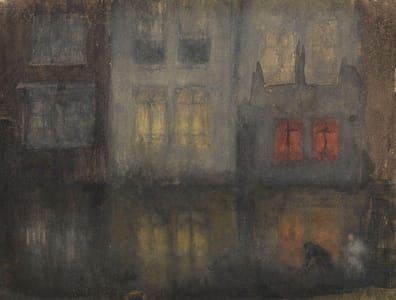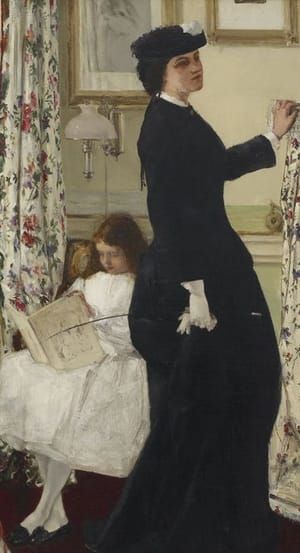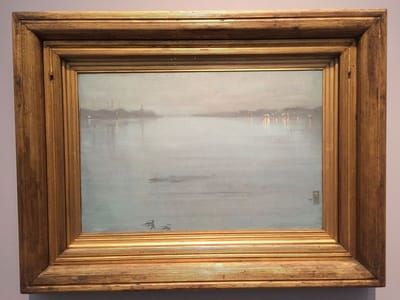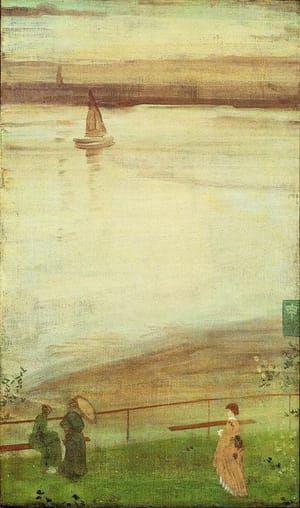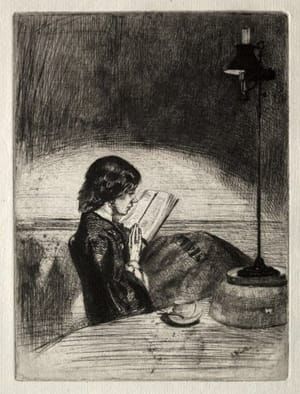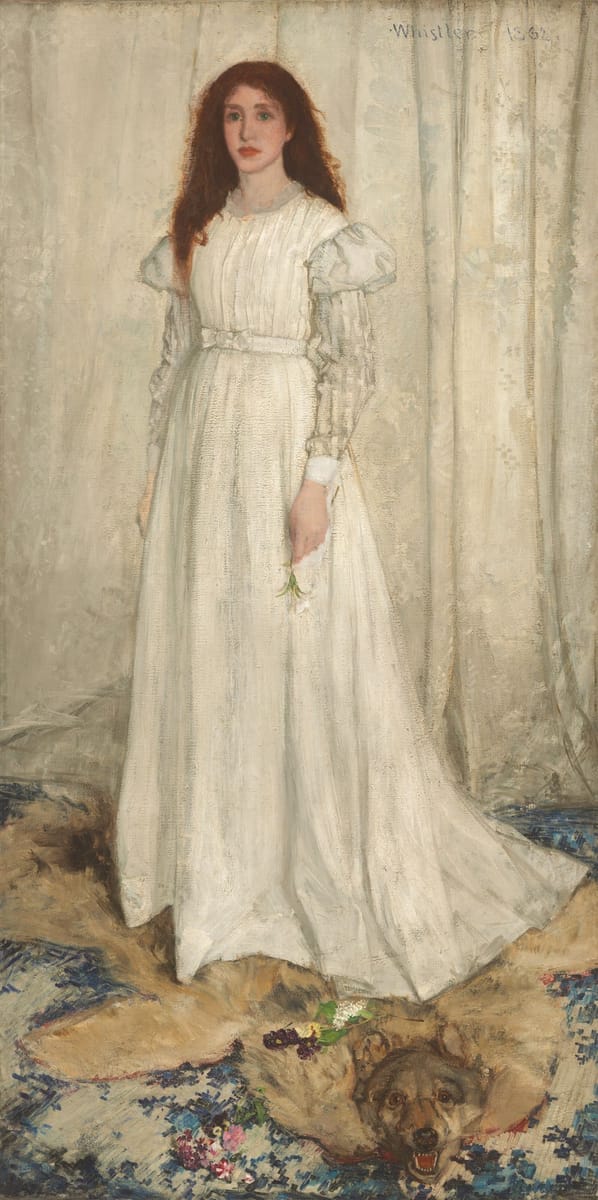

Symphony In White No. 1 - The White Girl, 1862
James Abbott McNeill Whistler
Symphony in White, No. 1, also known as The White Girl, shows a woman in full figure standing on a WOLF skin in front of a white curtain with a white lily in her hand. The color scheme of the painting is almost entirely white. The model is Joanna Hiffernan, the artist's mistress. Though the painting was originally called The White Girl, Whistler later started calling it Symphony in White, No. 1. By referring to his work in such abstract terms, he intended to emphasize his "art for art's sake" philosophy.
Whistler created the painting in the winter of 1861–62, though he later returned to it and made alterations. It was rejected both at the Royal Academy and at the Salon in Paris, but eventually accepted at the Salon des Refusés in 1863. This exhibition also featured Édouard Manet's famous Déjeuner sur l'herbe, and together the two works gained a lot of attention. The White Girl shows clearly the influence of the Pre-Raphaelite Brotherhood, with whom Whistler had recently come in contact. The painting has been interpreted by later art critics both as an allegory of innocence and its loss, and as a religious allusion to the Virgin Mary.
Whistler started working on The White Girl shortly after December 3, 1861, with the intention of submitting it to the prestigious annual exhibition of the Royal Academy. In spite of bouts of illness, he had finished the painting by April. In a letter to George du Maurier in early 1862, he described it as:
...a woman in a beautiful white cambric dress, standing against a window which filters the light through a transparent white muslin curtain – but the figure receives a strong light from the right and therefore the picture, barring the red hair, is one gorgeous mass of brilliant white.
Whistler submitted the painting to the Academy, but according to Heffernan, he expected it to be rejected at this point.... White Girl was submitted to the Academy along with three etchings, all three of which were accepted, while the painting was not.
Whistler exhibited it at the small Berners Street Gallery in London instead, where it was shown under the title The Woman in White, a reference to the novel of that name by Wilkie Collins, which was a popular success at the time.... The review in the Athenaeum complained that painting did not correspond to the character in the novel, propmpting Whistler to write a letter asserting that the gallery chose the title without consulting him, adding "I had no intention whatsoever of illustrating Mr Wilkie Collins' novel. My painting simply represents a girl dressed in white standing in front of a white curtain."
The next year, Whistler tried to have the painting exhibited at the Salon in Paris – the official art exhibition of the Académie des Beaux-Arts – but it was rejected there as well. Instead, it was accepted at the alternative Salon des Refusés – the "exhibition of rejects" that opened on May 15, two weeks after the official Salon.
Composition and interpretation
Whistler, especially in his later career, resented the idea that his paintings should have any meaning beyond what could be seen on the canvas. He is known as a central proponent of the "art for art's sake" philosophy. ...Whistler, who had never even read the novel, resented the comparison. About ten years later, he began referring to the painting as Symphony in White, No. 1, though a French critic had called it a Symphonie du blanc already at the time of its exhibition in Paris. By the musical analogy, he further emphasized his philosophy that the composition was the central thing, not the subject matter. The title was probably also inspired by Théophile Gautier's 1852 poem Symphonie en Blanc Majeur.
Women dressed in white was a theme to which Whistler would return in his Symphony in White, No. 2 and Symphony in White, No. 3.
Whistler was not entirely content with the realism the painting displayed in its original form, a trait he blamed on the influence Courbet had on him at the time. Later, between 1867 and 1872, he reworked it to give it a more spiritual expression. Even though Symphony was begun before Whistler first met Rossetti, the Pre-Raphaelite influence is still clear. The painting was an early experiment in white on white, with a woman standing in a white dress in front of a white background. This color scheme was a subject he would return to later, in two paintings that would be given the titles of Symphony in White, No. 2 (1864) and Symphony in White, No. 3 (1865–67).[18] The panel is long and slender, and the model's pose and the shape of her clothes further emphasise the vertical nature of the painting. The woman is bold, almost confrontational, in her direct gaze at the viewer, and her features are highly individualized. Art critic Hilton Kramer sees in Whistler's portraits a charm and a combination of craft and observational skills that his more radical landscapes lacked....
[https://en.wikipedia.org/wiki/Symphony_in_White,_No._1:_The_White_Girl]
© 1862 James Abbott McNeill Whistler
Arthur
coming soon
